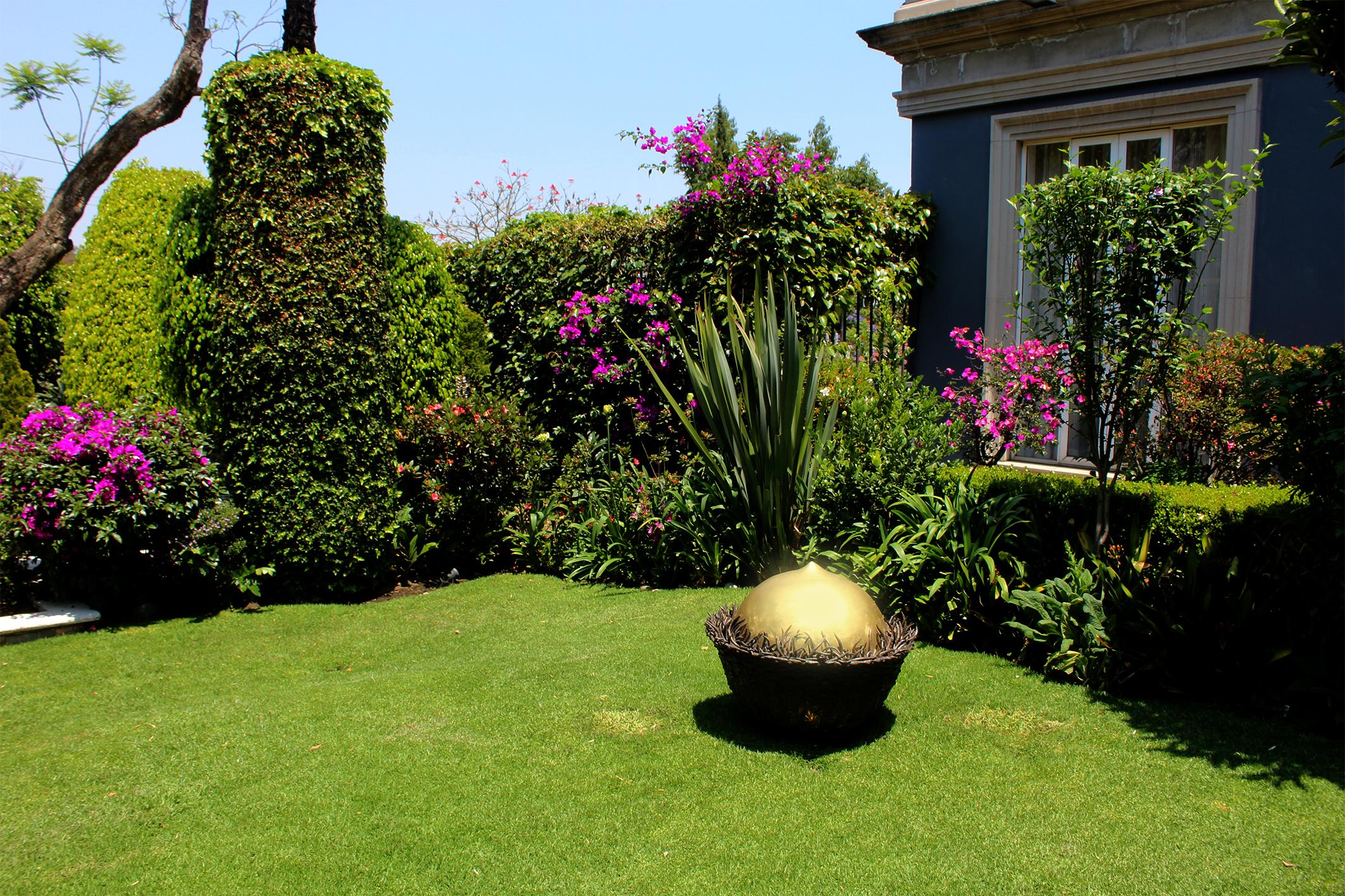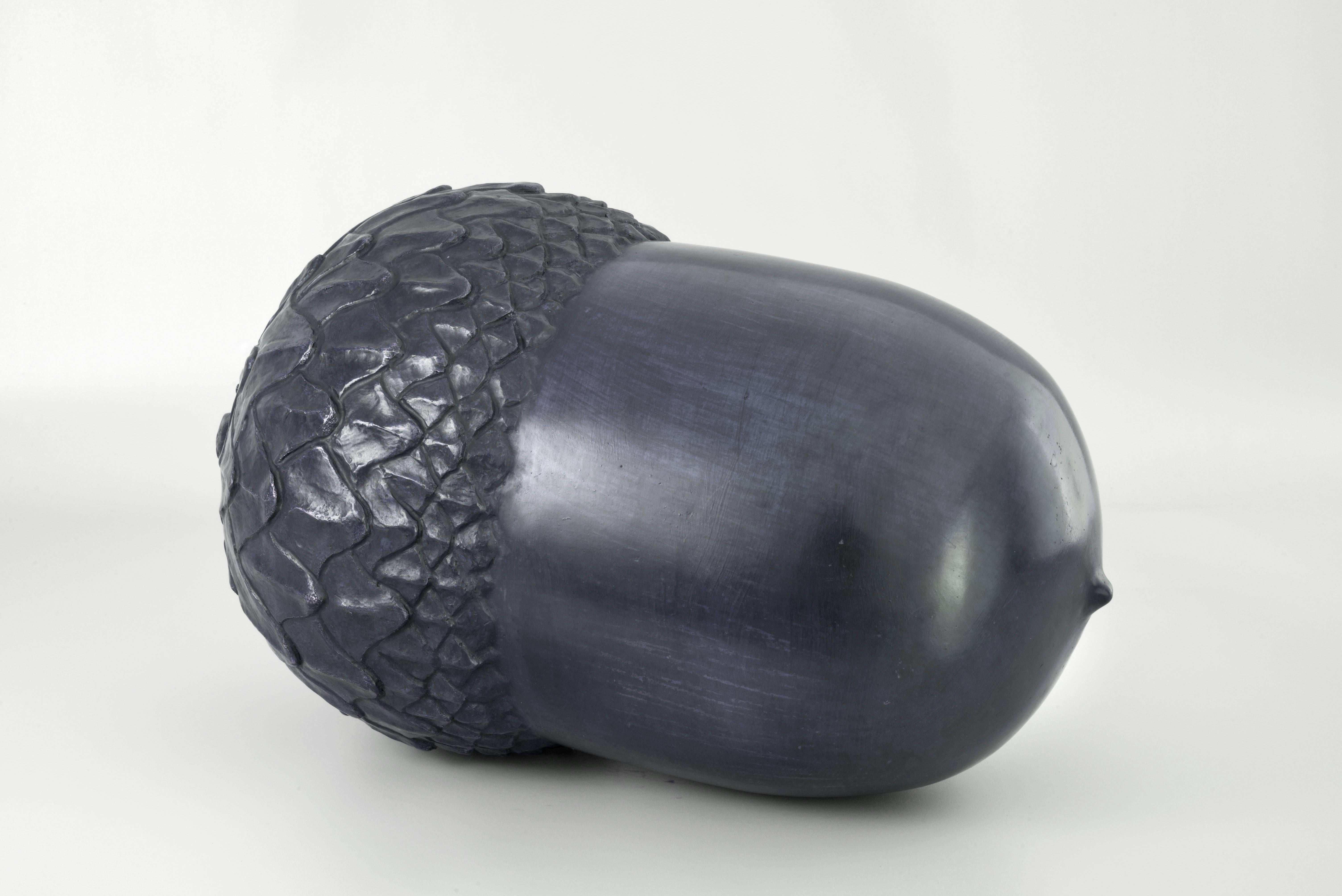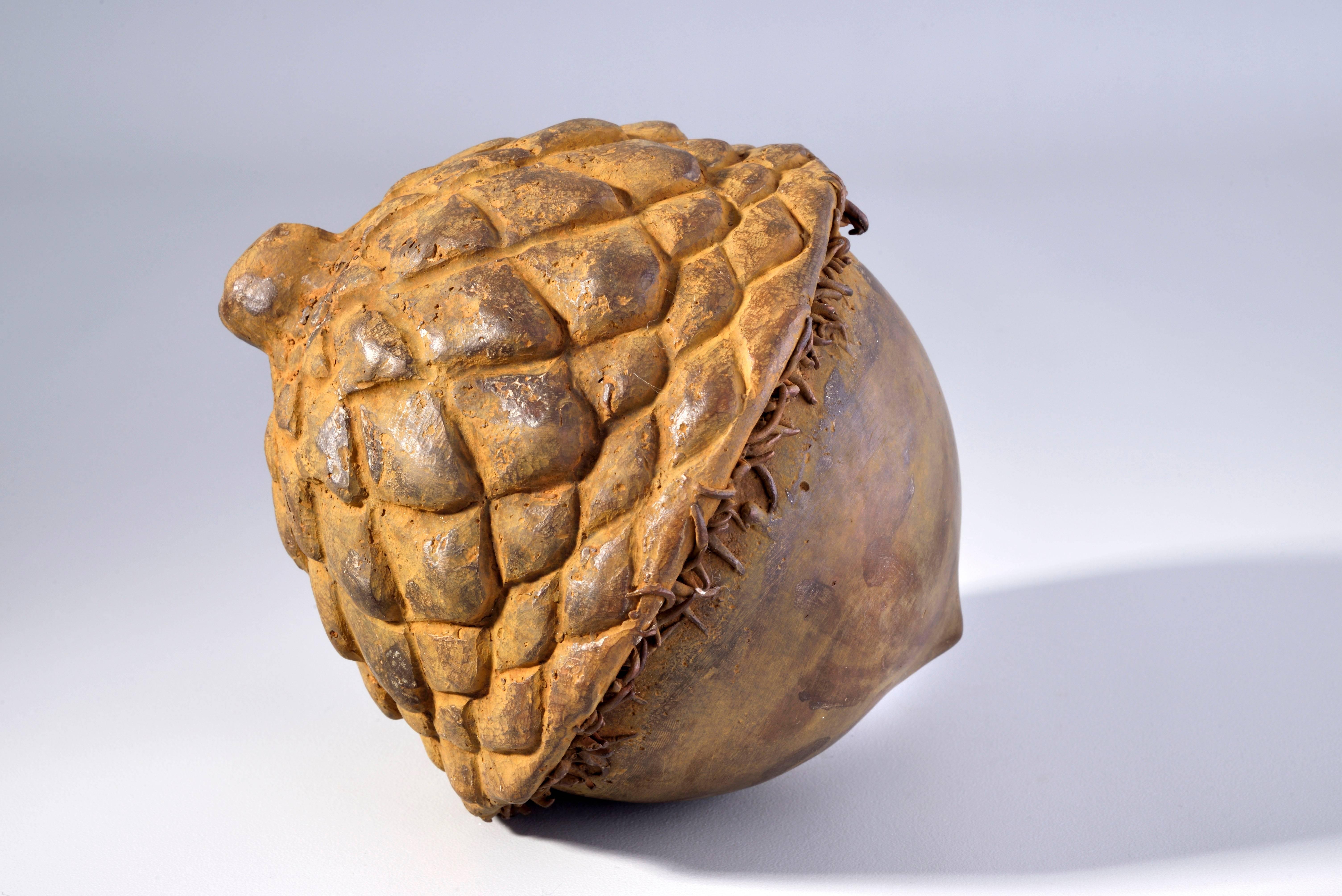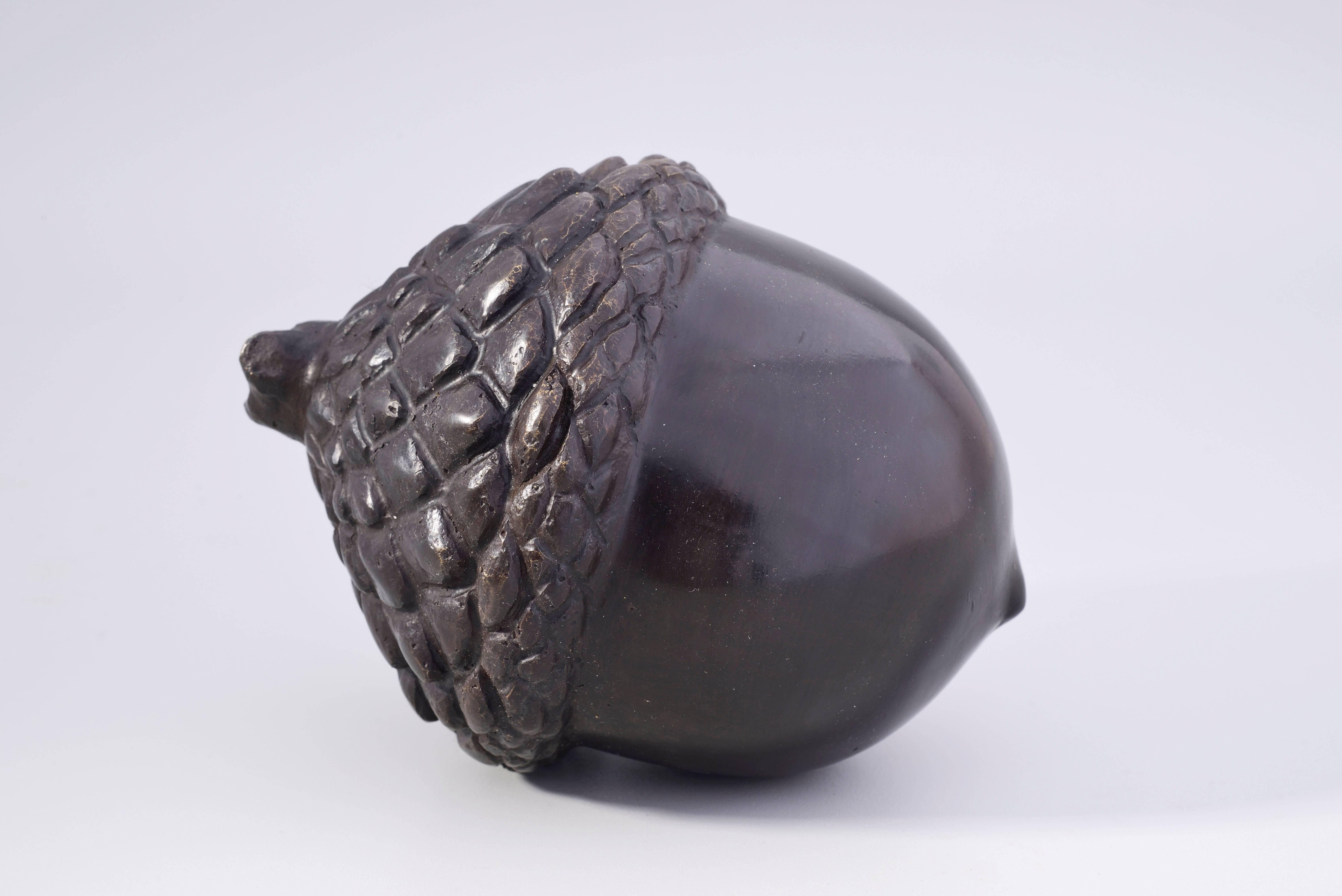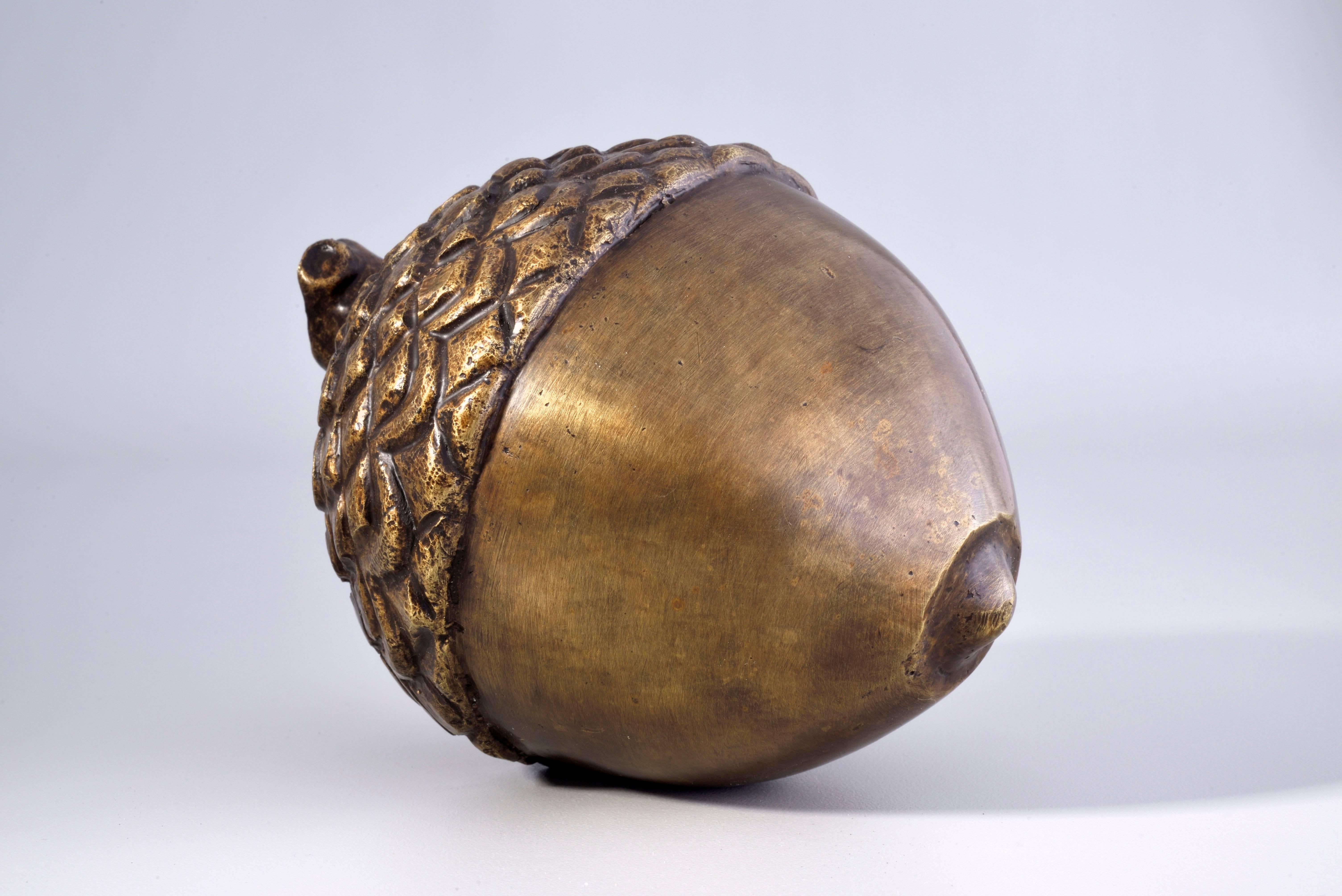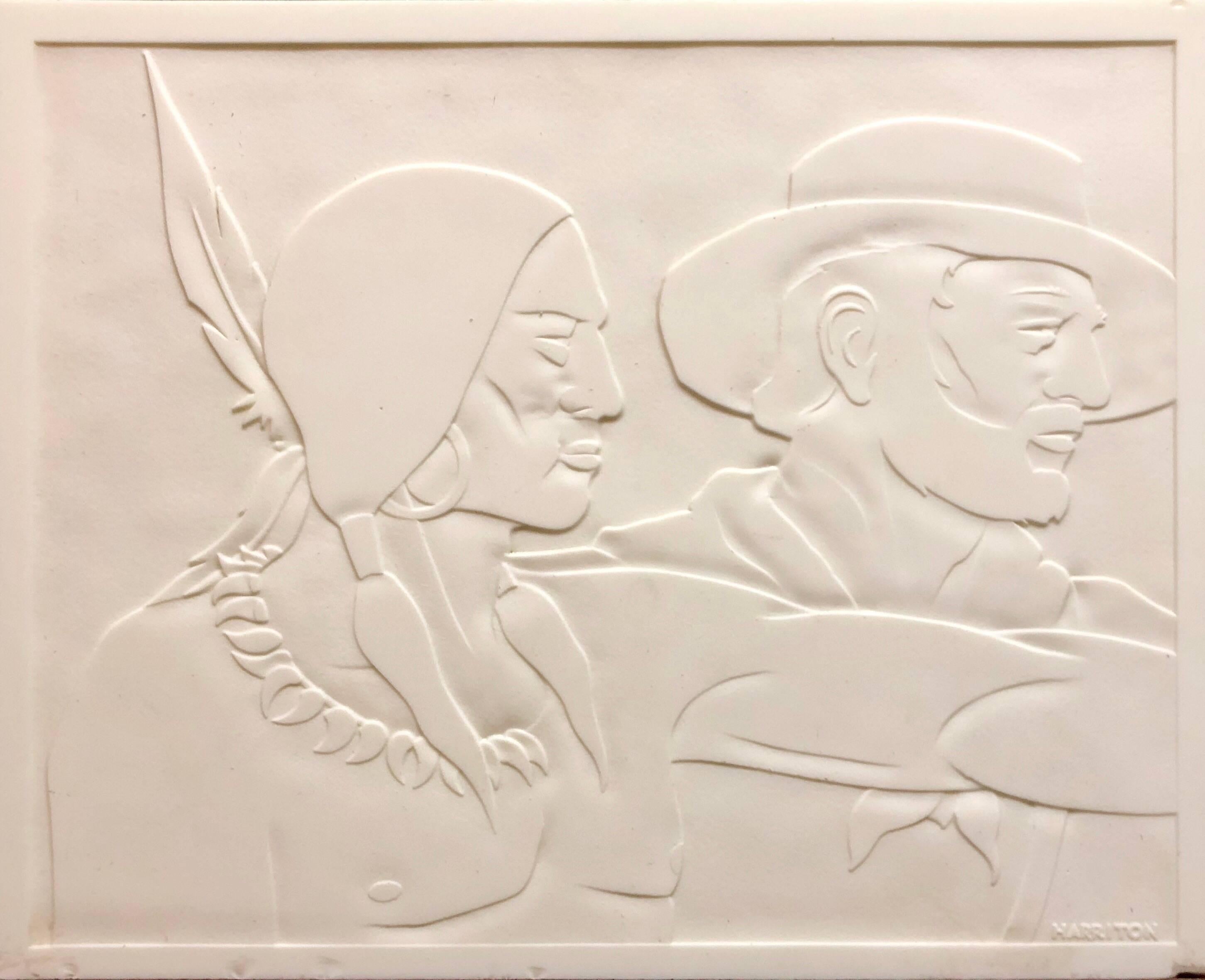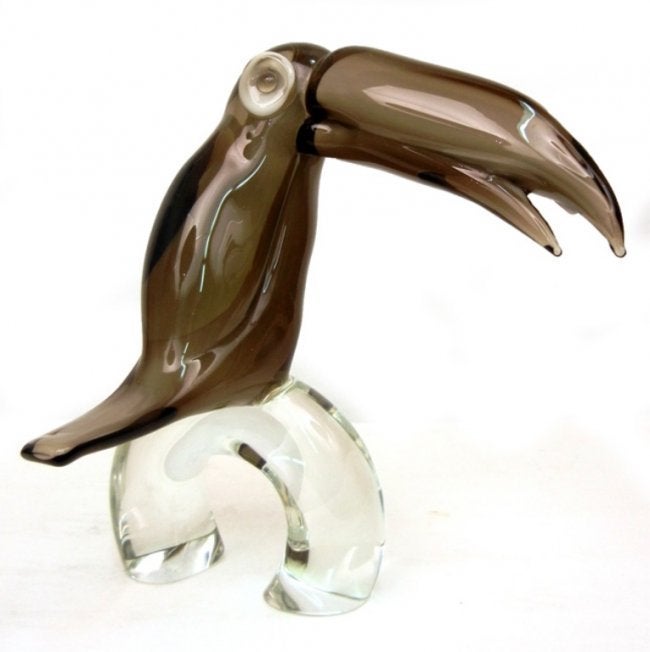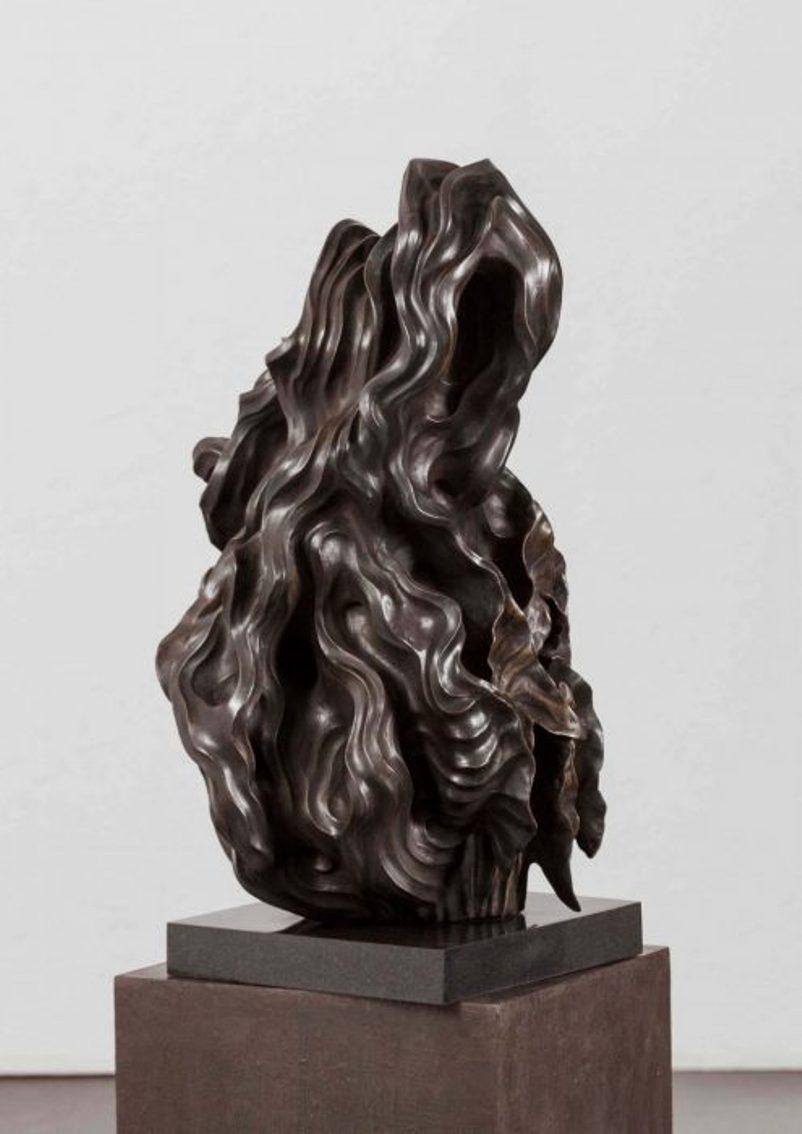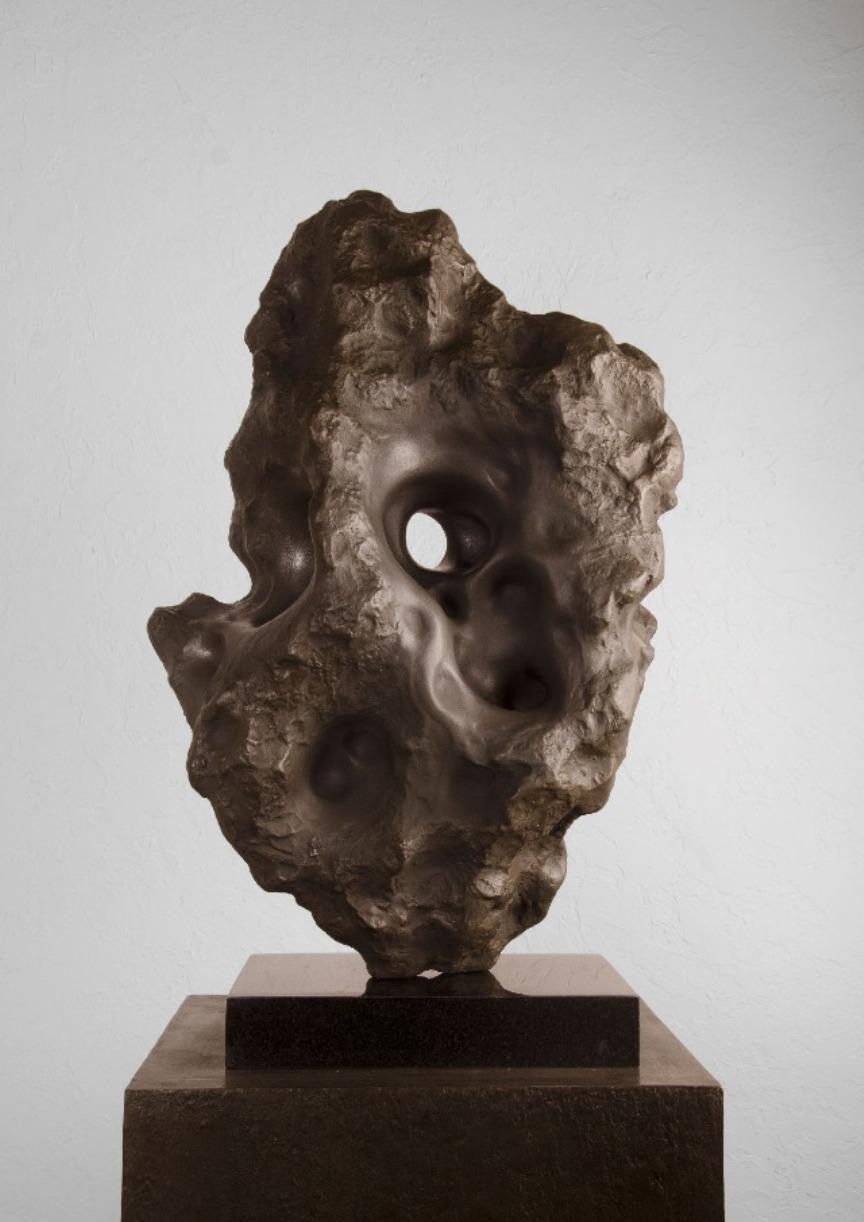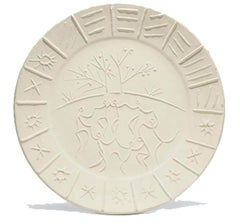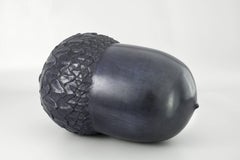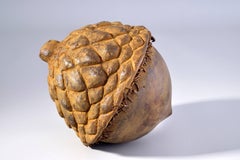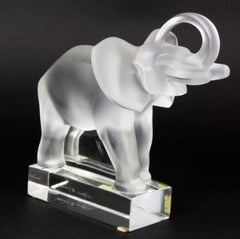
Elephant
View Similar Items
René LaliqueElephantc. 1960
c. 1960
About the Item
- Creator:René Lalique (1860 - 1945, French)
- Creation Year:c. 1960
- Dimensions:Height: 6 in (15.24 cm)Width: 6 in (15.24 cm)Depth: 4 in (10.16 cm)
- Medium:
- Movement & Style:
- Period:
- Condition:
- Gallery Location:Missouri, MO
- Reference Number:1stDibs: LU74732448653
René Lalique
The career of the famed jewelry designer, glassmaker and decorative artist René Lalique spanned decades and artistic styles. Best known today for his works in glass, Lalique first won recognition for his jewelry. He was described as the inventor of modern jewelry by the French artist and designer Émile Gallé, and his luxurious naturalistic designs helped define the Art Nouveau movement. Later as a glassmaker in the 1920s and ‘30s, Lalique designed vases, clocks, chandeliers and even car hood ornaments that were the essence of Art Deco chic. Even now, the name Lalique continues to be a byword for a graceful, gracious and distinctively French brand of sophistication.
Born in 1860 in the Marne region of France, Lalique began his career as a jewelry designer in the last decades of the 19th century. His work employed now-classic Art Nouveau themes and motifs: flowing, organic lines; forms based on animals, insects and flowers — all rendered in luxurious materials such as ivory, enamel, gold and semi-precious stones. By 1905, Lalique had begun creating works in glass, and his style began to shift to a cleaner, sharper, smoother, more modern approach suited to his new medium. His Paris shop’s proximity to perfumer François Coty’s led him to experiment with beautiful perfume bottles. He offered the first customized scent bottles, transforming the perfume industry. By the end of the First World War, the artist had fully embraced Art Deco modernity, devoting himself to new industrial techniques of glass production and designs that manifest the sweeping lines and the forms suggestive of speed and movement characteristic of the style. Lalique’s work looked both backward and forward in time: embracing ancient mythological themes even as it celebrated modern progress.
Late in his career, Lalique took on high profile luxury interior design projects in Paris, Tokyo and elsewhere. He designed decorative fixtures and lighting for the interior of the luxury liner Normandie in 1935, and decorated the salons of well-known fashion designer Madeleine Vionnet. Today, Lalique’s influence is as relevant as it was when he opened his first jewelry shop in 1890. In a modern or even a traditional décor, as you will see from the objects offered on these pages, the work of René Lalique provides the stamp of savoir-faire.
- Yan Black HeadbandBy Pablo PicassoLocated in Missouri, MO"Yan Black Headband" (A.R. 514) 1963 Red Earthenware Pitcher Painted in Black Inscised 'EDITION PICASSO MADOURA' and 'EDITION PICASSO' pottery stamps on...Category
1960s Modern Figurative Sculptures
MaterialsCeramic
Price Upon Request - Joie de VivreBy Pablo PicassoLocated in Missouri, MOJOIE DE VIVRE (A. Ramié no. 346) stamped, marked, engraved and numbered 'Madoura Plein Feu/Empreinte Originale de Picasso (underneath) unglazed white ea...Category
1950s Modern Figurative Sculptures
MaterialsCeramic
Price Upon Request - Seagull LampLocated in Missouri, MOWilliam F. Boogar, Jr. Seagull Lamp 1946 Bronze approx. 15 1/4" High x 6 1/2" Wide Signed and Dated Bottom WILLIAM F. BOOGAR, Jr., the Provincetown sculp...Category
1940s Modern Figurative Sculptures
MaterialsBronze
Price Upon Request - Study AimBy Carl KaubaLocated in Missouri, MOCarl Kauba "Study Aim" c. 1920 Bronze with Brown Patina Signed approx. 9.5 x 10 x 4 This Austrian sculptor was born in Vienna in 1865. His teachers were Karl Waschmann (1848-1905), known for his ivory sculptures and portrait plaquettes of contemporary celebrities, and Stefan Schwartz (1851-1924), who exhibited in Paris, including the Exposition Universelle of 1900 where he won a gold medal. Kauba's intricate bronzes, imported to the United States between 1895 and 1912, were cast at the Roman Bronze Works. Kauba was part of the nineteenth-century tradition of polychrome bronze sculpture. There were several types of patinas on a single statue: he could render the color of buckskin, variously tinted shirts, blankets, feathers, as well as beaded moccasins. Reportedly, Kauba came to America around 1886. Inspired by the Western tales of German author Karl May, he traveled to the West and made sketches and models. Critics, however, pointed out inaccuracies of costume and other details. For instance, the guns that his "mid-nineteenth-century" figures use are models produced after 1898. Apparently he did all of his works back in Vienna. Besides the variety of color, Kauba's bronzes show a great range of textures and his style is highly naturalistic. The sculptor loved ornament, some of which he rendered with coiled wire for reins, rope and feathers in headdresses. He successfully rendered figures in motion and often executed compositions with more than one figure. Berman (1974) illustrates non-Western subjects by Kaula, such as the pendants Where? and There (ca. 1910), a seated Scottish couple, impressive in the expressions and the details on patterned fabrics of both sitters. Another genre piece is Buster Brown...Category
Early 20th Century Realist Figurative Sculptures
MaterialsBronze
Price Upon Request - 2 Seconds To GoBy Bob ScriverLocated in Missouri, MOBob Scriver (American 1914-1999) "2 Seconds To Go" 1971 Bronze approx. 24" H. x 12W Signed and Titled on the Base Ed. 18/35 sculptor who carried on the realist...Category
1970s American Realist Figurative Sculptures
MaterialsBronze
Price Upon Request - Native American in CanoeBy Carl KaubaLocated in Missouri, MOCarl Kauba (1865-1922) "Native American in Canoe" Polychrome Bronze Signed approx 5.5 x 10 x 2.75 inches This Austrian sculptor was born in Vienna in 1865. His teachers were Karl Waschmann (1848-1905), known for his ivory sculptures and portrait plaquettes of contemporary celebrities, and Stefan Schwartz (1851-1924), who exhibited in Paris, including the Exposition Universelle of 1900 where he won a gold medal. Kauba's intricate bronzes, imported to the United States between 1895 and 1912, were cast at the Roman Bronze Works. Kauba was part of the nineteenth-century tradition of polychrome bronze sculpture. There were several types of patinas on a single statue: he could render the color of buckskin, variously tinted shirts, blankets, feathers, as well as beaded moccasins. Reportedly, Kauba came to America around 1886. Inspired by the Western tales of German author Karl May, he traveled to the West and made sketches and models. Critics, however, pointed out inaccuracies of costume and other details. For instance, the guns that his "mid-nineteenth-century" figures use are models produced after 1898. Apparently he did all of his works back in Vienna. Besides the variety of color, Kauba's bronzes show a great range of textures and his style is highly naturalistic. The sculptor loved ornament, some of which he rendered with coiled wire for reins, rope and feathers in headdresses. He successfully rendered figures in motion and often executed compositions with more than one figure. Berman (1974) illustrates non-Western subjects by Kaula, such as the pendants Where? and There (ca. 1910), a seated Scottish couple, impressive in the expressions and the details on patterned fabrics of both sitters. Another genre piece is Buster Brown...Category
Early 20th Century Realist Figurative Sculptures
MaterialsBronze
Price Upon Request
- Bellota 13By María José de la MacorraLocated in Mexico City, CDMX#garden #sculpture #contempraryart #decoration #outdoors #bronze #nature #acorn This large bronze sculpture is a contemporary art piece which can also serve as art for the garden or outdoors. María José de...Category
2010s Naturalistic Figurative Sculptures
MaterialsBronze
- Bellota 11By María José de la MacorraLocated in Mexico City, CDMXMaría José de la Macorra (México, D.F., 1964) realizó sus estudios en la Escuela de Cerámica y Porcelana de Toluca, Mokichi Okada Association,...Category
2010s Naturalistic Figurative Sculptures
MaterialsIron
- Bellota 9By María José de la MacorraLocated in Mexico City, CDMXMaría José de la Macorra (México, D.F., 1964) realizó sus estudios en la Escuela de Cerámica y Porcelana de Toluca, Mokichi Okada Association,...Category
2010s Naturalistic Figurative Sculptures
MaterialsBronze
- Bellota 8By María José de la MacorraLocated in Mexico City, CDMXMaría José de la Macorra (México, D.F., 1964) realizó sus estudios en la Escuela de Cerámica y Porcelana de Toluca, Mokichi Okada Association,...Category
2010s Naturalistic Figurative Sculptures
MaterialsBronze
- Bellota 7By María José de la MacorraLocated in Mexico City, CDMXMaría José de la Macorra (México, D.F., 1964) realizó sus estudios en la Escuela de Cerámica y Porcelana de Toluca, Mokichi Okada Association,...Category
2010s Naturalistic Figurative Sculptures
MaterialsBronze
- Rise of a Lollipop Man: The Bike - Original Hand Blown Glass SculptureBy Boris ShpeizmanLocated in AMSTERDAM, NLBoris Shpeizman, an glass craftsman, transforms the childhood dreams of men into tangible art, focusing on the yearning for unattained toys and their delicate inner worlds. He crafte...Category
2010s Contemporary Figurative Sculptures
MaterialsMetal
